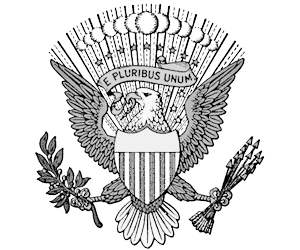|
|
|
|
|
Mexican Migration
History for kids: Brief Facts for kids via
the Fact Sheet The 1819 Adams Onis Treaty set out a boundary between the United States and Mexico and gave Florida to the U.S. Mexico won their independence from Spain in 1821 and founded the Mexican Republic. Mexico allowed Americans to settle in Texas and gave freedom to travel and trade with Mexico opening the Santa Fe Trail The Mexican-American War (1846-1848) aka the Invasion of Mexico, erupted over unresolved border disputes. On February 2, 1848 Mexico was forced to sell Alta California and New Mexico to the US for $15 million under the terms of the 1848 Treaty of Guadalupe Hidalgo and recognized the Rio Grande as America’s southern boundary The California Gold Rush started with the discovery of gold at Sutter's Lumber Mill in Coloma, California on January 24, 1848. The discovery of gold in California was therefore made before Mexico formally ceded territories to the United States, including California, under the terms of the Treaty of Guadalupe Hidalgo During the California Gold Rush, over 25,000 Mexicans arrived in California. Americans resent their presence and Mexicans are subjected to violent assaults In 1910 the Mexican Revolution begins, led by Pancho Villa and Zapata World War 1 (1914 - 1918) breaks out creating a labor shortage in the U.S. during which time Mexicans were encouraged to work in the USA - Refer to American Entry into WW1. Germany attempt to draw Mexico into warfare with the Zimmermann Telegram. United States Congress Authorized "Mounted Inspectors" along the US-Mexico Border in 1915. Mexican immigration to America continued to grow until 1929 when the Great Depression reversed the flow of immigration from Mexico during which time many Mexicans were deported. According to the U.S. census between 1910 and 1930, the number of immigrants from Mexico tripled from 200,000 to 600,000 The Immigration Act of 1924 restricted the number of immigrants from a given country but exempted people from the Western Hemisphere from the quota system. The Labor Appropriation Act of 1924 established the Border Patrol and Border Stations to combat smuggling and illegal immigration. Refer to US-Mexican Border WW2 (1939-1945) created another labor shortage in the United States as many of Americans were drafted into the military. The Bracero Program (1943 - 1965) encouraged Mexicans to work in America, increasing Mexican immigration The Bracero Program (1943 - 1965) brought five million temporary Mexican Laborers to Work in US farms and railroads in a 22-Year period to help the US economy during, and after, WW2. Racial tensions flared during WW2 and led to the Zoot Suit Riots. In 1949 the Border Patrol seized nearly 280,000 illegal Mexican immigrants. The Korean War (1950-1953) saw a revival of the Bracero Program (1943 - 1965) By 1953, the number of illegal Mexican immigrants seized by the Border Patrol had grown to more than 865,000 which led to Operation Wetback. Operation Wetback was a system of cooperation between the U.S. Border Patrol and the Mexican government to control illegal immigration Operation Wetback during which the U.S. Immigration Service deported more than 3.8 million people of Mexican descent The first maquiladora factories were established under the Border Industrialization Program in 1964. The Bracero program was repealed in 1965 The 1986 Immigration Reform and Control Act granted Legal Status to qualifying Immigrants who entered the US illegally before January 1, 1982 The 2006 Secure Fence Act authorized fencing along the US-Mexican Border and authorized the use of surveillance technology
Mexican Migration for
kids - Push
and Pull Factors Social Push and Pull factors: In Mexico people might want to move because their are better education and health facilities in America or because their relatives already live in America Environmental Push and Pull factors: The climate and geography in Mexico produce natural disasters such as tsunamis, volcanoes and earthquakes which can be so frightening that Mexicans are desperate to move to a safer environment Economic Push and Pull factors: Mexico is a relatively poor country with low paid jobs, there are much better employment prospects in the United States Political Push and Pull factors: Political Push factors include the bloody conflict of wars and revolutions, such as the 1910 Mexican Revolution, during which times Mexicans fled from the political upheaval and violence and fled to the safety of the United States. The political situation is currently stable in Mexico, but corruption is rife involving the bribery of officials to obtain construction permits, and the corruption of police and the judiciary |
| US American History |
| 1881-1913: Maturation Era |
| US Immigration Laws |
|
|
|
|
|
First Published2016-04-19 | |||
|
Updated 2018-01-01 |
Publisher
Siteseen Limited
| ||
|
|

